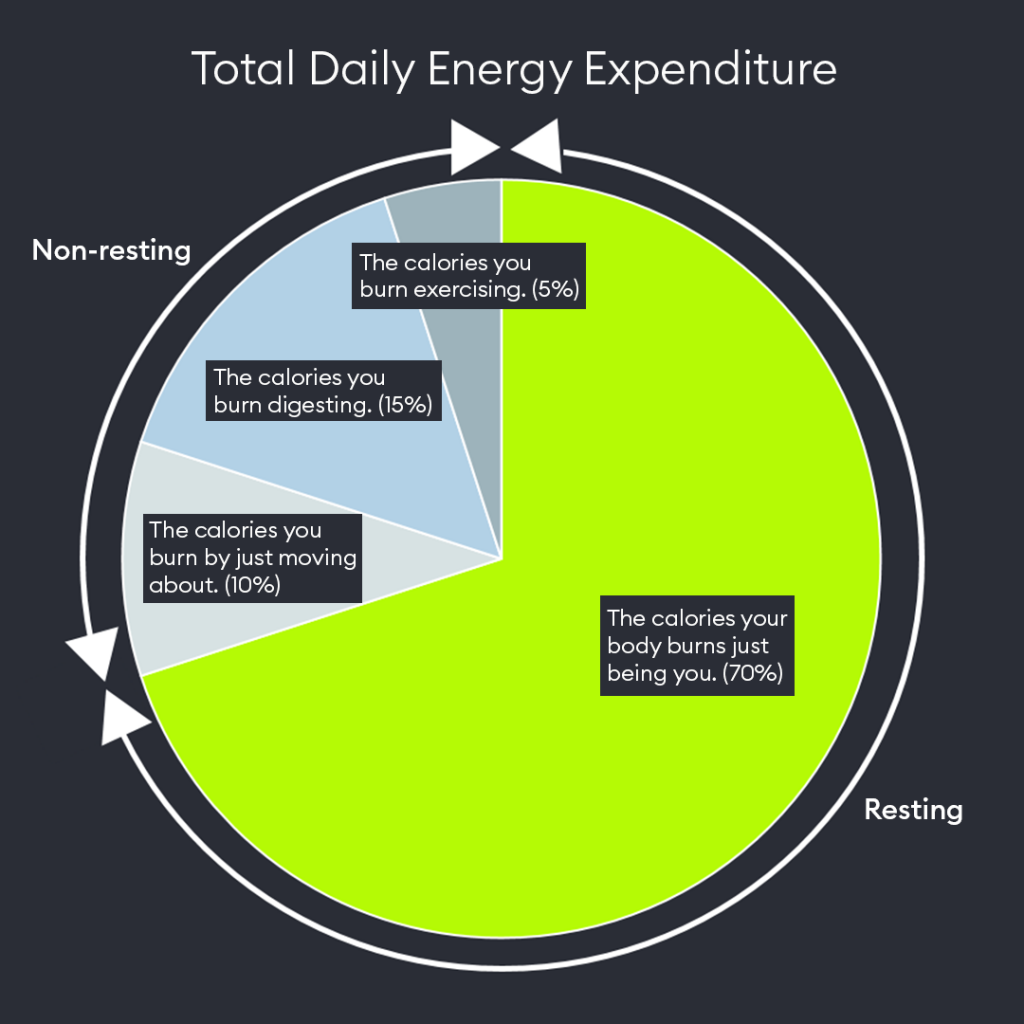Whether from your fitness tracker, or every influencer across social media, we’re always told 10,000 steps a day is a golden number. That hitting 10k gives us a health and fitness status of the highest standard. But what do 10,000 steps a day really mean for the body? Does taking that many steps have a real impact?
Many of us are on a bid to improve our overall health and fitness, so it can help dissect this. Is doing 10,000 steps a day the key to keeping healthy?
How does the body burn energy?
To understand the principle behind 10,000 steps per day, it helps to go back to how the body burns energy.
There are multiple ways the body burns energy, but only a couple we can actually control. The first one is through purposeful, gym-based exercise. This is the type of exercise that we plan into our daily routine. Whether that’s a run, a HIIT session, or lifting heavy weights, this type of activity is intense and only done in short periods. It, of course, depends on exactly what it is, but this exercise burns energy. However, it probably only accounts for around 5% of the total number of calories burned in a day.
The second type of exercise is the non-purposeful exercise we are continually doing without even noticing. Walking to work, going to the shops, doing the washing, visiting a friend, or taking the stairs. You guessed it, taking steps. This type of movement isn’t intense, but we can do it for extended periods. It accounts for a higher percentage of our overall calorie burn. Probably 15% – triple that of purposeful exercise.
When it comes to weight loss, it all comes down to simple maths. If you burn more energy than you consume, you will lose weight. It doesn’t matter what you eat or how you burn energy, if what goes out is a bigger number than what goes in, weight will be lost. That’s what people refer to when they talk about being in a calorie deficit.

Why do people measure steps?
Stepping more really just means walking more. Walking is a gentle form aerobic exercise that we do every day. Walking burns energy. Burning energy is the key to weight loss or weight management.
Fitness trackers and phones count steps as a way of measuring this general activeness. If you’ve ever tried to calculate your BMI, you might remember that it always asks you for your activity level. Sedentary, lightly active, quite active, or very active. This is because your level of general activeness has a massive impact on the number of calories you burn a day, and therefore the number you need to maintain your current weight. In this way, steps aren’t really about the solid act of placing one foot in front of another. It’s more about your body’s movement as a whole. This is why you shouldn’t worry too much if your fitness watch counts a step when you stretch your arms into the air. That’s still movement.
What happens when you do more or fewer steps?
Unlike purposeful exercise like resistance training, running, or playing a sport, we don’t tend to notice our step count or general activity level throughout the day. For that reason, it can fluctuate massively from day-to-day. That means, the number of calories we burn can also fluctuate massively.
Here’s the anecdote. You get up in the morning, and you make time for a really early gym session. It’s a HIIT one, so you feel absolutely exhausted by the end of the 45 minutes. After that, you sit down to work and remain at your desk for about 8 hours, barely moving unless it’s to go to the toilet or get a biscuit. You’re tired, so in the evening you relax in front of the TV and head to bed early. That still sounds like a full-on day, but the number of calories you have burned is pretty low in reality. It’s probably under your weight maintenance calories, despite the morning workout.
On another day, you wake up in the morning and decide not to workout. It’s a Saturday. Instead, you get up and go for a walk, grabbing a coffee from town. You pop into the shops on your way back to do a bit of browsing. You walk to meet a friend for lunch, and you wander around the park having a chat afterwards. In the evening, you’re on your feet cooking dinner for a while, and you clean up after. By the time you end your day, you’ve burned over your maintenance calories and created a calorie deficit.
In this way, the number of steps you do can impact your daily calorie burn a lot more than you might think. The workouts or runs you do are an addition and not a replacement for general activity.
Why is doing 10,000 steps so important?
The number 10,000 isn’t magic. There’s no concrete science behind it being a gateway to ultimate calorie burn. It’s really just an amount reflecting the average person’s need for movement to maintain their body weight.
It’s achievable but takes some conscious effort. Taking the stairs, getting out for a lunchtime stroll, and getting off the bus a stop early can all help you get there.
It’s also important to remember that keeping active is good for the muscles, joints, and mental health. It doesn’t have to be all about calorie burn. For some people, weight management isn’t an issue, and they find themselves always burning energy, perhaps even too much. Weight loss and calorie burn don’t equal health for everybody. So, 10,000 steps aren’t something everyone is interested in achieving.
You also might decide you want to do things a little differently. You might want to do all your daily exercise in a run in the morning, then not really move for the rest of the day. Or you might have days where you’re generally more active than the others, and it equals out across the week. Or your job might mean you do a lot of standing around meaning steps don’t get counted, but your body’s still been pretty active.
So, don’t obsess over the 10,000. The 10,000 is just a general number used to guide you to understand how much activity you’re doing in a day.
How does keeping track of step count help with weight-loss?
The 10,000 steps aim is so popular because it’s a straightforward tactic to apply to weight loss. As mentioned, increasing your step count doesn’t take too much time or effort, it’s more just about reminding yourself to move more.
In this way, it can be used to make sure a calorie deficit is created. Once this baseline is in place, dieting becomes a lot easier and doesn’t need to be too restrictive. Doing purposeful exercise on top of this becomes an addition that contributes to your overall energy burn and weight loss rate. It can also allow you to do exercise that benefits the body in other important ways. It shouldn’t always be about cardio and burning the most calories. Time to pick up some weights.
So, that’s the lowdown. If you’re looking for a way to measure how active you are, and perhaps increase calorie burn and lose weight, step count is a beneficial tool to get you there. It brings with it an awareness of how much you move that you might not have known before. But 10,000 isn’t a magic number. And steps aren’t for everyone. It’s always up to you how you apply health and fitness tips to your routine.



